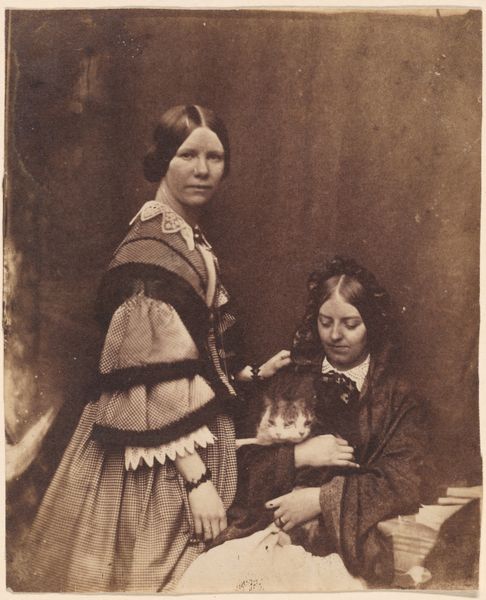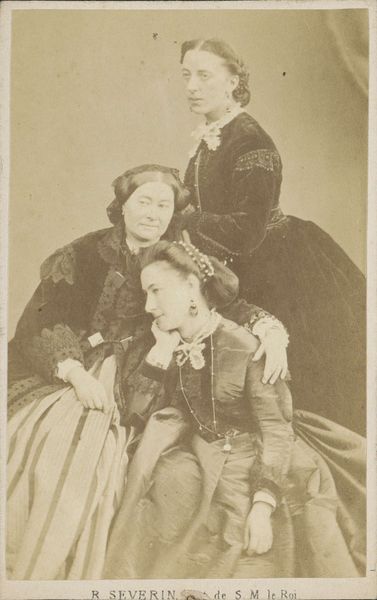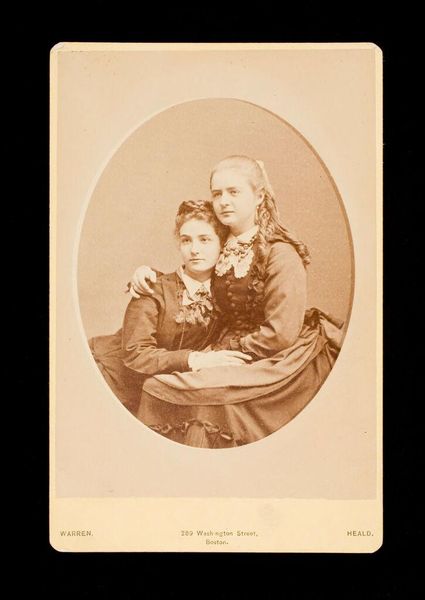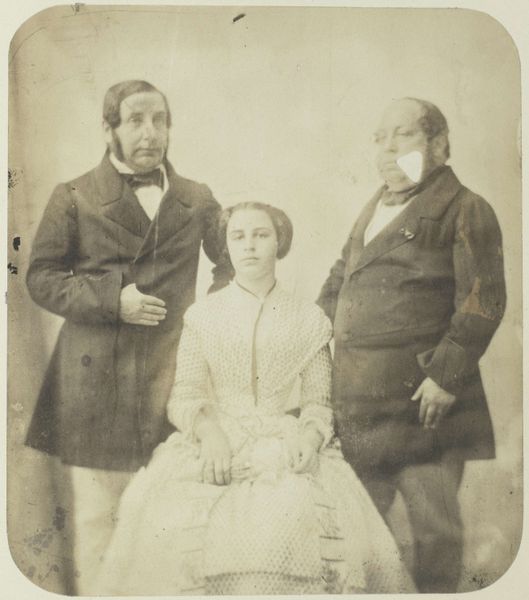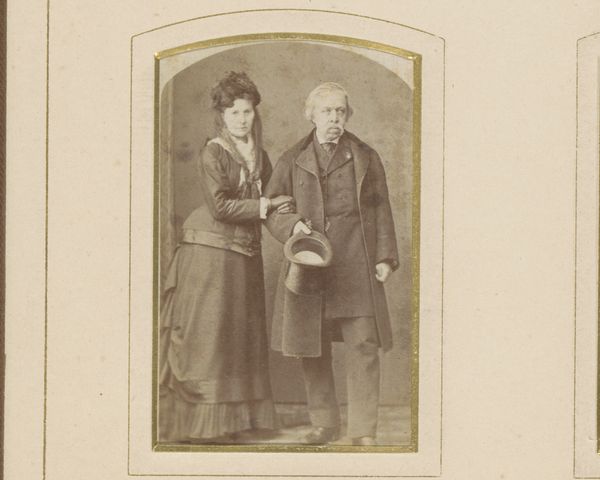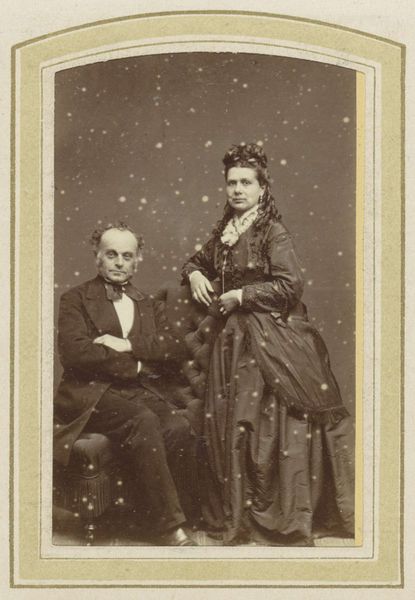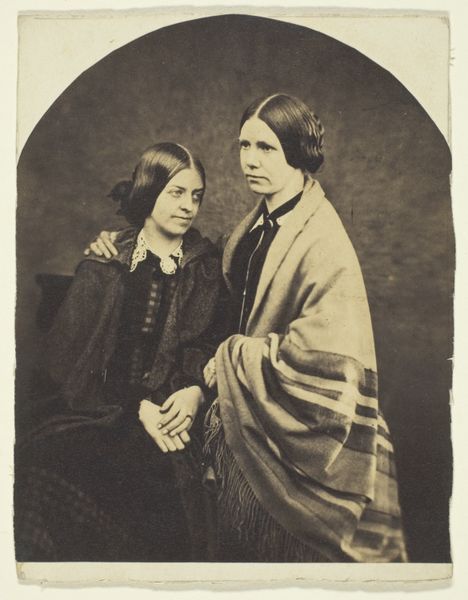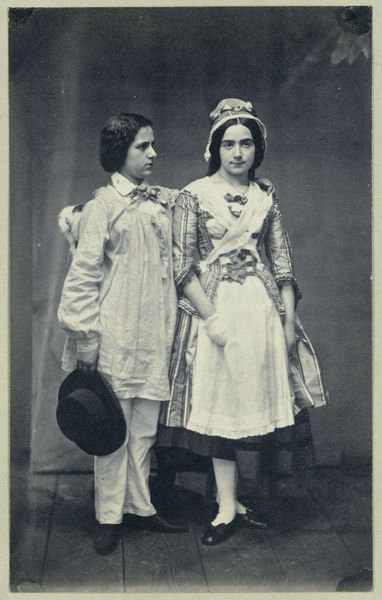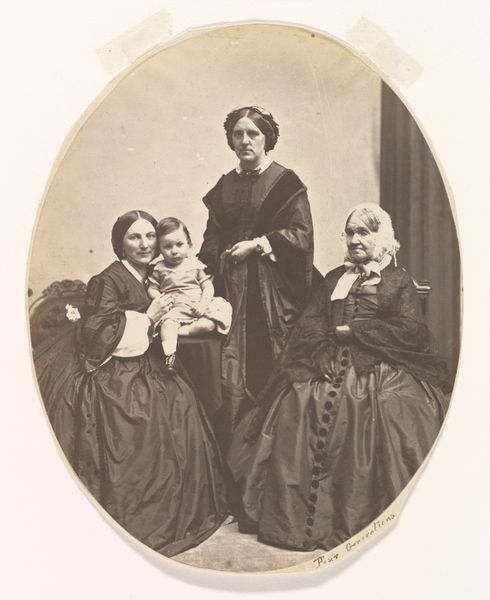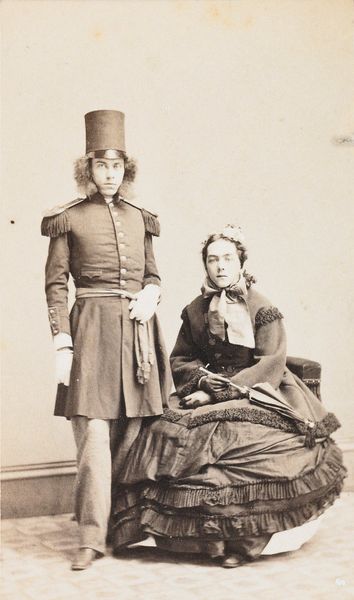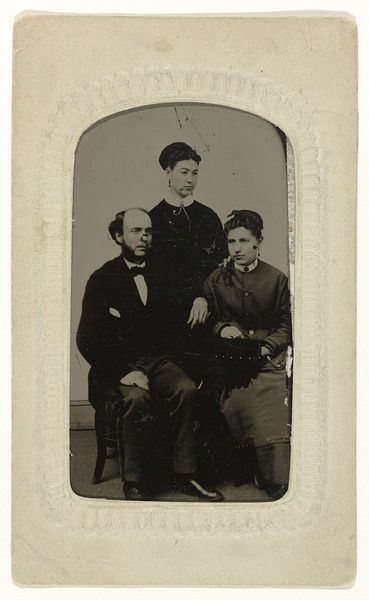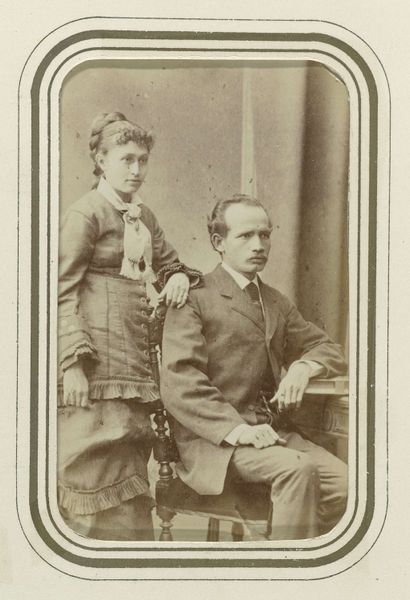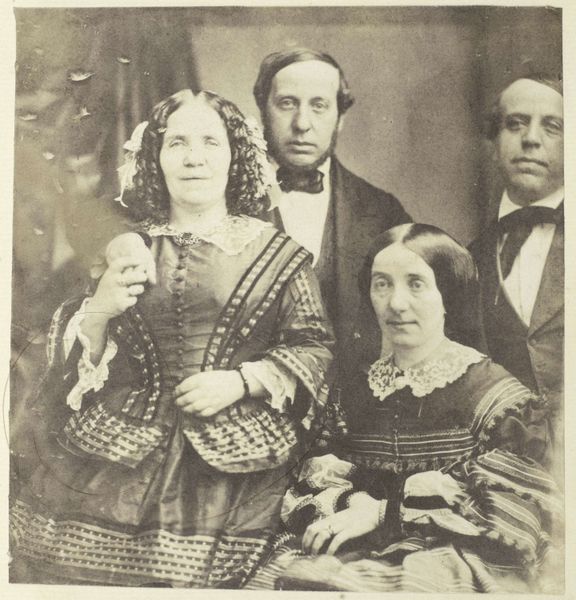
photogravure, photography, gelatin-silver-print
#
portrait
#
photogravure
#
portrait
#
photography
#
group-portraits
#
romanticism
#
gelatin-silver-print
Dimensions: 8 3/8 x 6 1/4 in. (21.27 x 15.88 cm) (image)
Copyright: No Copyright - United States
Curator: This is "Portraits--A Group" by David Octavius Hill, circa 1845. It’s a photogravure print now held at the Minneapolis Institute of Art. Editor: There’s such a compelling melancholic mood about this. It feels so intimate and haunting. The figures seem enveloped by shadow and there's a stillness that just grabs your attention. Curator: The textures and the tangible materiality are so interesting, right? Notice the rich patterning on the shawl, contrasted against the wool of the man's jacket. It draws your attention to the play of light and the printing process itself. I am curious about the shawl. Editor: Absolutely. Looking at the way the two women embrace the seated man also brings up questions of female roles within the domestic sphere of the time. It evokes a sense of familial ties, of support and perhaps even constraint, given the societal limitations imposed on women then. Curator: Yes, and given that photogravure prints, particularly in Hill’s work, offered an alternative mode of image production versus traditional painting, that challenges pre-existing art hierarchies. This becomes even more evident when considering Hill's other group portraits involving the everyday person in comparison to high profile elite. Editor: It really prompts us to think about whose stories get told and whose likenesses are preserved, challenging the notion of who is considered "worthy" of portraiture within the narratives of history. There is almost something so subtly subversive, you know? It brings up questions about representation, identity, and the democratization of image-making. Curator: It certainly highlights a shift in power structures linked to both the industrial production of images and its consumption by wider society during that period. The romantic, almost wistful quality becomes almost secondary to this new way of viewing reality through reproduction. Editor: I find it fascinating how an artwork like this, through its use of visual cues and material context, prompts us to reflect not only on the historical moment in which it was created, but also on the broader implications for the representation and understanding of individuals, gender, class and families in art history. Curator: Agreed. It is really impressive to examine it under such a contemporary and almost, like you said, democratizing lens.
Comments
No comments
Be the first to comment and join the conversation on the ultimate creative platform.
